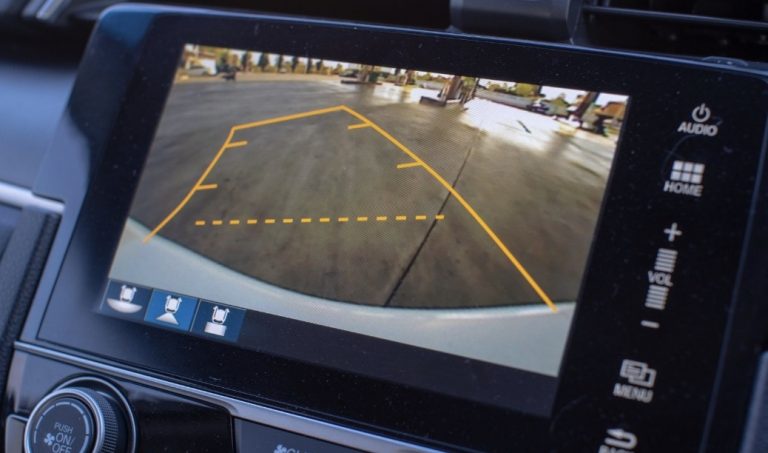In our fast-paced, technologically-driven world, we often marvel at the progression of technology in sectors like healthcare, AI, or entertainment. However, there’s another area where technological advancements have made a significant impact – road safety. This crucial aspect of our lives is often overlooked, yet technology has made strides in ensuring that we remain safe while navigating our roads. Today, we’ll explore some of these innovative safety features that are shaping the future of automotive safety.
Story Stages
Automatic Emergency Braking: A Guardian on the Road
Automatic emergency braking (AEB) systems represent a significant leap in accident prevention technology. AEB systems use sensors, radar, or cameras to monitor the vehicle’s proximity to others on the road. When the system detects a potential collision, it first alerts the driver, giving them an opportunity to react. If the driver doesn’t take sufficient action, the system can automatically apply the brakes to mitigate or even prevent a crash.
This technology is especially beneficial in heavy traffic, where sudden stops can occur, and during high-speed driving, where reaction times are crucial. By providing an extra layer of safety, AEB systems are proving to be invaluable assets in our pursuit of safer roads.
Vehicle Backup Cameras: Enhancing Rear View Safety
Another safety feature now common in many new vehicles is the vehicle backup camera. This technology addresses a critical blind spot for drivers – the area directly behind the vehicle. Backup cameras, also known as reversing cameras, provide drivers with a clear, wide-angle view of what’s behind them when reversing, significantly reducing the risk of backing into objects, animals, or even people.
Beyond preventing property damage or injury, backup cameras can also assist with parking, especially in tight spaces. This technology promotes safety and convenience by giving drivers a better view of their surroundings, contributing to overall road safety.
Adaptive Cruise Control: The Future of Relaxed Driving
Technology has also made long-distance driving less strenuous through adaptive cruise control (ACC). This advanced system automatically adjusts a vehicle’s speed to maintain a safe distance from vehicles ahead, merging the ease of cruise control with advanced safety features.
ACC is particularly beneficial on highways, where maintaining a consistent speed and safe distance from other vehicles is crucial. This technology not only makes driving more comfortable but also reduces the risk of rear-end collisions, promoting road safety.
Lane-Keeping Systems: Aiding Driver Focus
One of the leading causes of road accidents is inadvertent lane departures, often due to driver fatigue or distraction. Here, lane-keeping systems (LKS) come into play. These intelligent systems monitor road markings and provide alerts or corrective action if the vehicle starts to drift out of its lane without signaling.
LKS technology is yet another example of how the advanced safety features found in new vehicles can assist drivers in maintaining focus on the road, contributing to a safer driving environment.
Ignition Interlock Devices: Preventing Drunk Driving
One prominent technological innovation enhancing road safety is the ignition interlock device (IID). Typically installed in vehicles as a result of court orders following alcohol-related driving offenses, the IID works as a breathalyzer, preventing the car from starting if it detects a blood alcohol concentration above a predetermined safe level.
However, these devices are not only for those with legal obligations. Anyone concerned about the risks associated with drunk driving can voluntarily install an IID in their vehicle. This proactive approach can serve as a self-imposed safeguard against the temptation or the risk of driving while intoxicated. It can also be seen as a form of accountability, particularly for parents wanting to protect teenagers who have just started driving.
Using such devices in vehicles can significantly reduce the risk of accidents caused by drunk driving, making the roads safer not just for the driver but also for everyone else on the road.
Autonomous Vehicles: The Future of Road Safety
While still in the developmental stage, autonomous or self-driving vehicles represent the next frontier in road safety. Equipped with sophisticated systems like radar, LiDAR, and machine learning algorithms, autonomous vehicles aim to take human error out of the equation entirely.
Though not without challenges, the potential of self-driving cars to promote road safety is tremendous. As the technology matures, we can expect to see a significant reduction in traffic accidents, marking a new era in road safety.
Conclusion: The Road to Safer Journeys
From emergency braking to autonomous vehicles, it’s clear that technology is playing a significant role in enhancing road safety. As we continue to innovate, the objective remains clear: to create an environment where everyone can navigate our roads safely and efficiently. As drivers, we must embrace these technological advancements, understand their functionality, and use them responsibly. After all, technology is only as effective as its user. Here’s to safer journeys, all thanks to technology.
